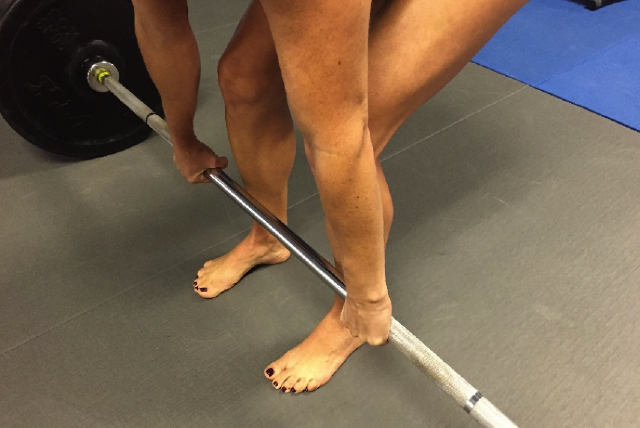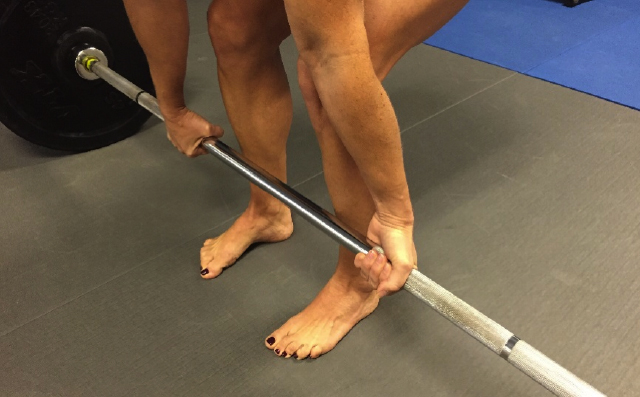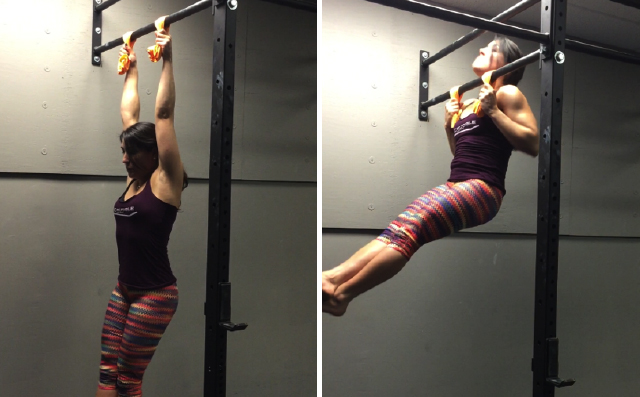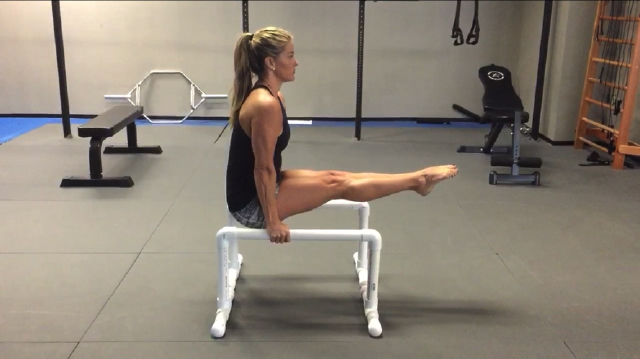http://www.thealternativedaily.com/
[…]
 This post was originally published on this site
This post was originally published on this sitehttps://www.girlsgonestrong.com/
I recently came across a website called The Art of Manliness, and one of the articles I read was about grip strength. This should not come as a surprise, as most of us probably assume men train their grip strength to have stronger hands and forearms.
The article noted that while the hands and forearms make up just 5% of the body, the benefits of a strong grip pay large dividends both in training and elsewhere.
It went on to say that grip strength is completely ignored by most men, which got me thinking… if a website about “manliness” is stating that grip training is being ignored by most men, I wonder how much more it’s being ignored (or worse, avoided) in women’s training programs.
I have been teaching my students about the benefits having a strong grip for almost a decade now. I was taught how important it was when I was first introduced to kettlebell training, and lately it has been reinforced even more as I have been instructing the SFB bodyweight certification. In this training we teach about the three most powerful neural generators: the glutes, abs and grip, and emphasize that the easiest ways to get overall strong is through ab work and grip work.
While training for a super strong grip might not be high on your priority list, it doesn’t mean we should forget about it altogether. Think about this for a moment:
What things do you do on a daily basis for which having a stronger grip is helpful?
Or maybe you’re like a lot of the women who write into Girls Gone Strong, and you struggle with your forearms and fingers fatiguing during certain exercises, before you get the main muscles worked (i.e. Deadlifts).
Let me share with you a few of the best ways to train your grip using familiar exercises, but with a little twist.
Heavy Deadlifts
One of the easiest ways to work on your grip strength is to add heavy deadlifts into your program if you aren’t currently doing them. As you begin to lift heavier you will find that it will challenge your grip by making the bar feel as if it will roll out of your hands. As you increase the weight you may need to train with an alternate grip.

Deadlift: Regular Grip

Deadlift: Alternating Grip
Bottoms-Up Kettlebell Work
If you are already including kettlebell skills in your training, you can make them more challenging by doing them “bottoms up.” Select a lighter bell than usual because the balance aspect taxes your grip and forearms quicker. For example, Bottoms-Up Cleans, Bottoms-Up Squats, Bottoms-Up Military Press, Bottoms-Up Windmills and Bottoms-Up Turkish Get-Ups.
Loaded Carries
Walking for distance holding heaving objects will build your grip and forearm strength. The pinch grip plate carries and kettlebell farmer walks in the video below are just two examples for building your grip, while also building strength endurance to keep your fingers and forearms from burning out quickly during your other lifts.
Hangs or Pull-Ups (Bar, Towel or Ropes)
If you enjoy doing hangs or pulls, your options are endless:

Towel Hangs and Towel Pull-Ups
Parallette Work
This is another great way to improve your grip, as the parallettes are normally a bit wider than a pull up bar. Depending on the skill you’re working you may be holding up your full bodyweight. As an added bonus, while working your grip you will also be getting an incredible abdominal workout. Examples include: L-sits, Push-Ups or Planks, and L-sit to Tuck Thru (and if you’re advanced… to handstands).

L-Sit on the Parallettes
Crush grippers / Pinch work
Rather than re-invent the wheel, I would recommend you read this article by Judd Johnson, as he is a Competition Grip Sports Athlete.
Another very important aspect of Judd’s article that should not be missed is working/training the antagonist. In this case we would be talking about the extensors—the muscles on the back of your hands. Remember to stretch your fingers and forearms after doing any or all of the above grip exercises. The following video shows you a few of the ones I use.
Lastly, all this extra grip work might take a bit of a toll on your hands. Calluses are not a bad thing, and you can manage them by keeping them filed, clean, and moisturized. Our friend, Jen Sinkler, offers some great advice on this subject.
A strong grip isn’t a “guy” thing. It’s an “everyone” thing, and I encourage women to embrace grip training. Developing a strong, powerful grip will help you reach new levels in your training—and in your life.
 This post was originally published on this site
This post was originally published on this sitehttp://www.thekitchn.com/feedburnermain
From Apartment Therapy → How To Make a Moth-Repellent Sachet
 This post was originally published on this site
This post was originally published on this sitehttp://www.thekitchn.com/feedburnermain
My first encounter with bulk bins as a kid was in our neighborhood chain grocery store, and all I remember is candy. The bins reminded me of the serve-yourself candy shops and movie theater concession stands, and I longingly passed by the bins wishing I could reach in there and snatch a snack. My parents were wiser, though, and steered us clear of the tempting towers of sweets.
But bulk bins have evolved to carry grains, legumes, spices, oils, sweeteners, and so many ingredients we need for everyday cooking that they’re now one of my favorite sections of the grocery store. And while I load up on pantry staples there, they also hold great deals on snacks! Here are some of my favorites.
 This post was originally published on this site
This post was originally published on this sitehttp://www.thekitchn.com/feedburnermain
Who: Hanson Watkins, owner of Indie Candy
What: Big-Eight Allergen-Free Confectioners
Where: Birmingham, Alabama
Hanson Watkins knows a thing or two about the candy business. “There used to be a candy maker in every town in the United States – maybe two,” she explains, as we walk through the triple-storefront workspace of her company, Indie Candy. “Now most of the candy in the US is made by one of three companies, and it’s all done on an industrial scale.” Which is great if you’re interested in a pack of Twizzlers for a dollar, but Watkins has a slightly more ambitious goal.
Trained as a chef, and after a career in healthcare marketing, Watkins received a diagnosis of celiac disease right after she began dealing with one of her son’s allergies, and a business model was born – albeit in stages. When she began creating her first allergen-free candies, an all-natural gummy, she was working in her own kitchen. Then, in a quest to increase production, she looked further afield.
 This post was originally published on this site
This post was originally published on this sitehttp://www.thekitchn.com/feedburnermain
Popcorn is already a pretty common snack; one we often enjoy while watching movies at home or in the theater. And while popcorn drenched in butter has its merits, it’s destined for so much more than that. So whether you pop your own kernels or use a nifty microwave bag, try these popcorn tricks and treats the next time you’re looking to mix up your snack (or movie) routine.
 This post was originally published on this site
This post was originally published on this sitehttp://www.thekitchn.com/feedburnermain
With the first exciting week of active fermentation behind us, it might look like nothing is happening in your beer — but looks can be deceiving. The next few weeks are a quiet, but important, time for our freshly made homebrew. Today, let’s talk about what’s going on in that jug and why we don’t want to rush things.